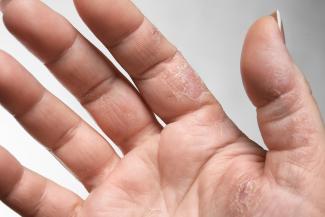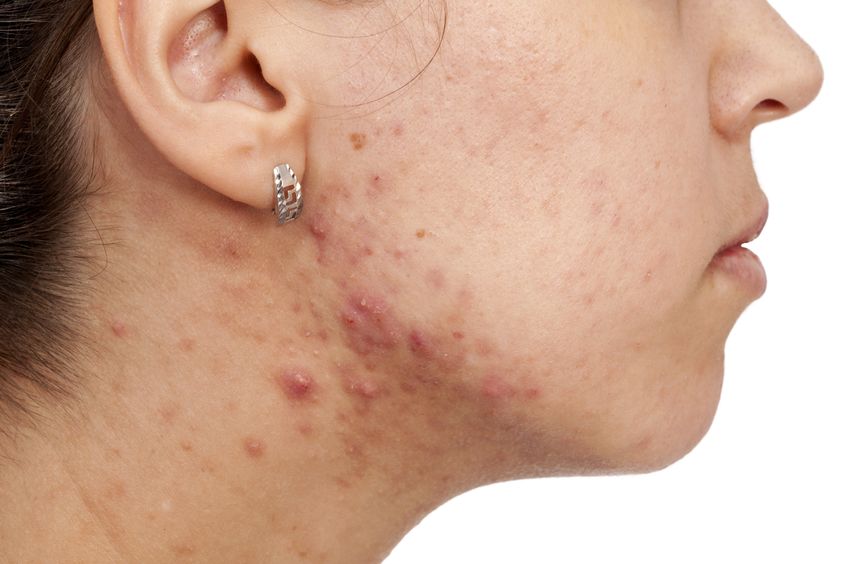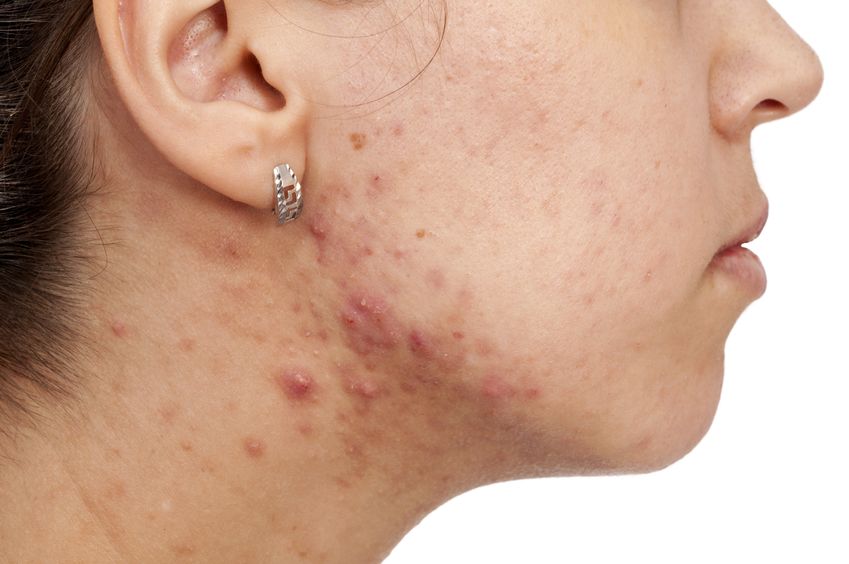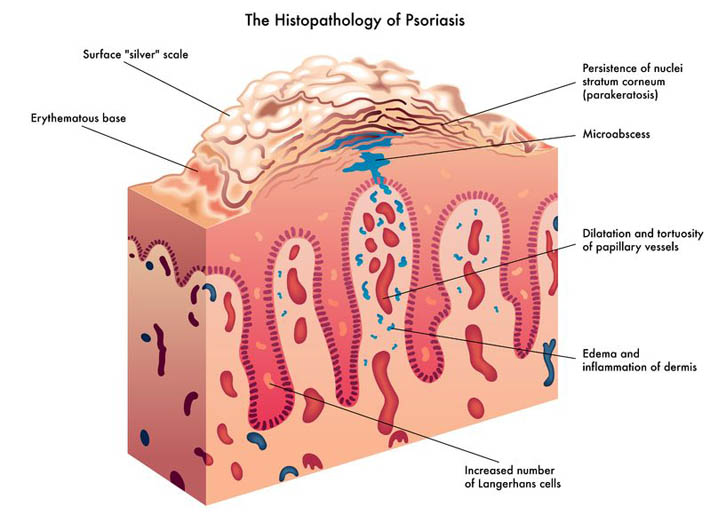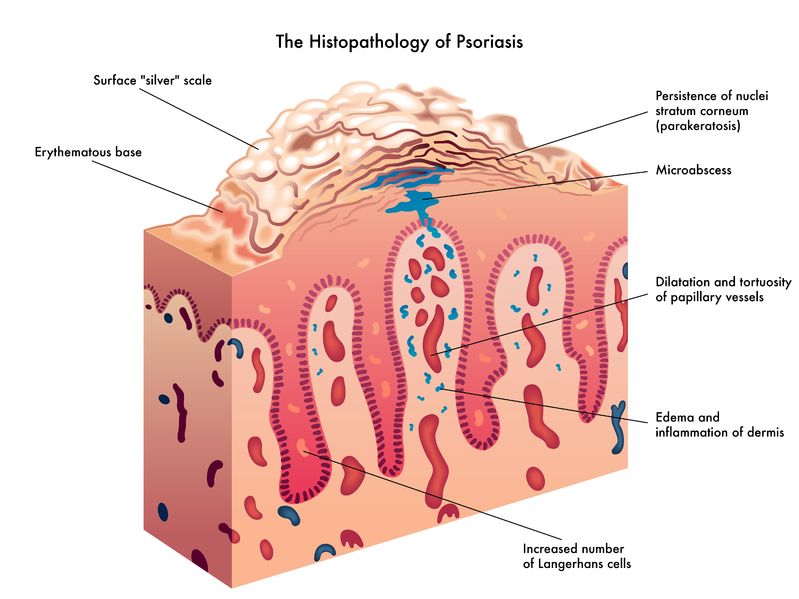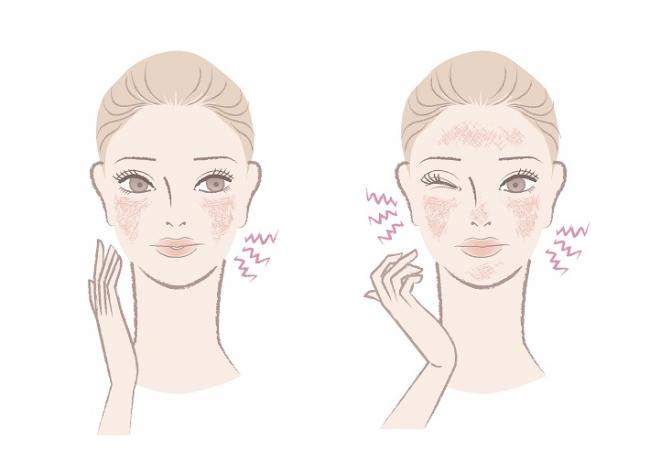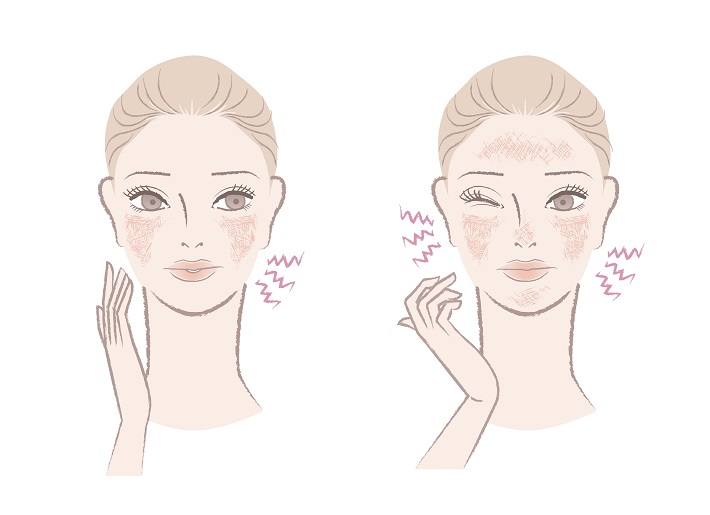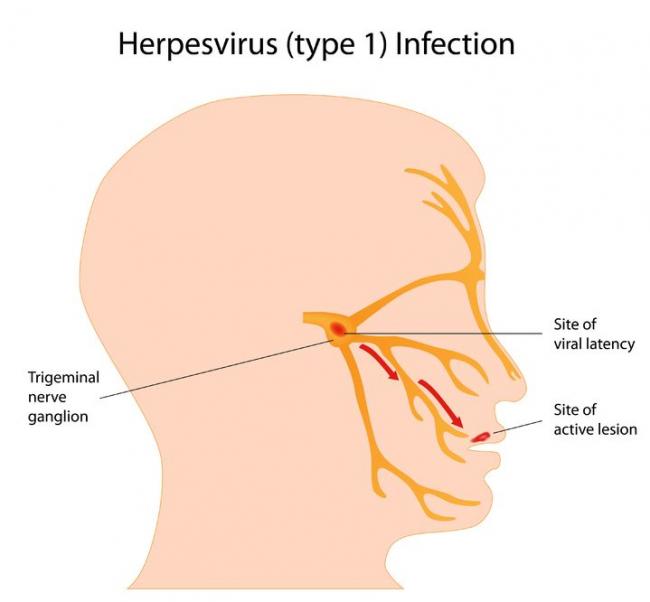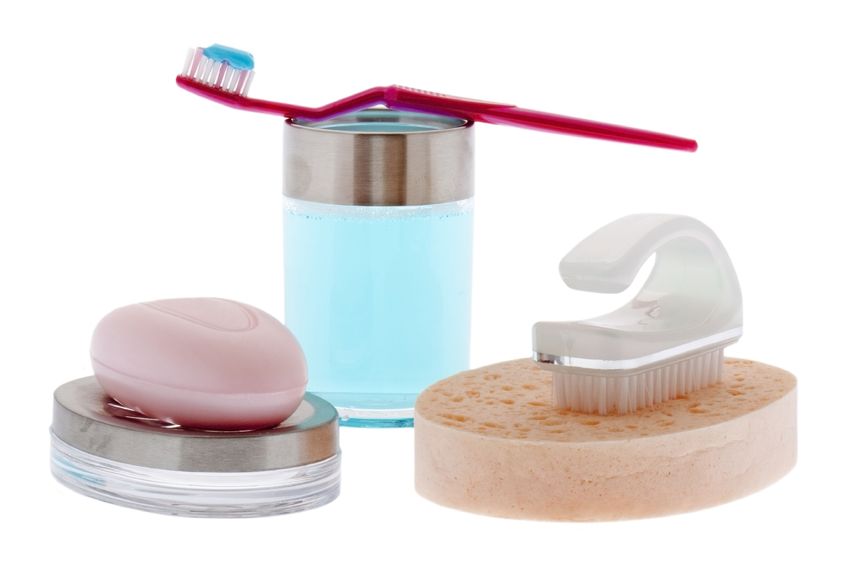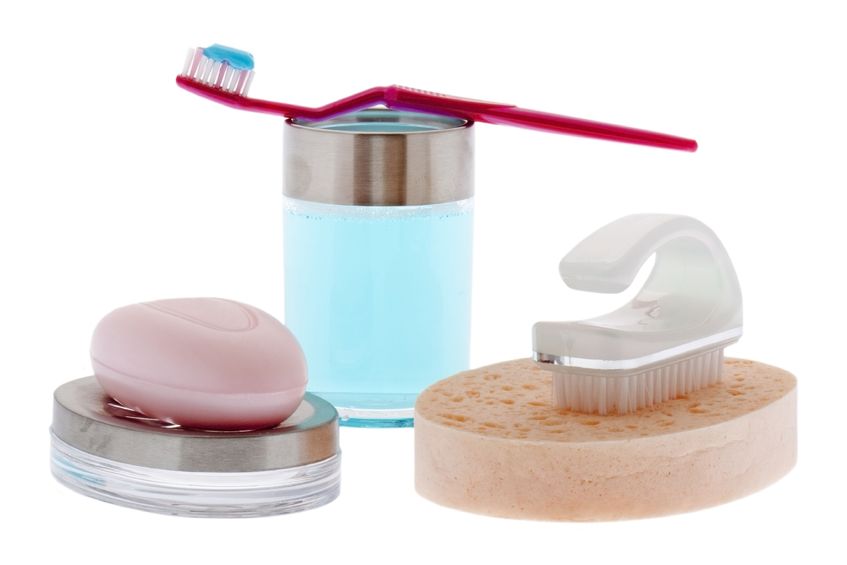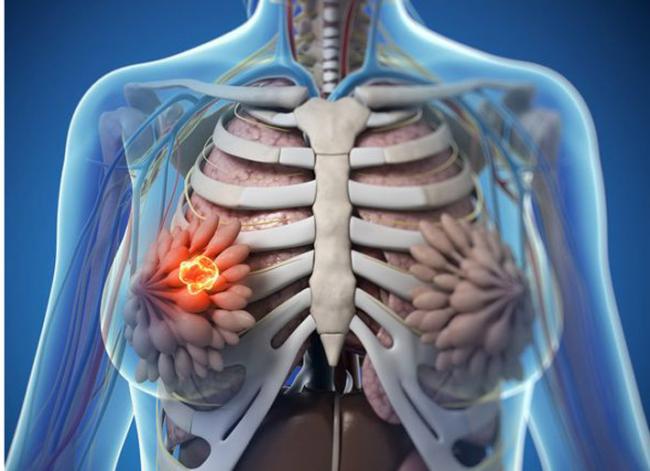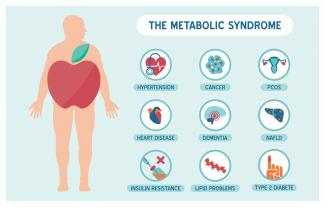Periodontitis
Periodontitis is the result of gingivitis progressing to a more serious stage. It is characterized by swollen, reddish, and bleeding gums, as well as bad breath.[1, 2, 3] Severe periodontitis affects 10–15% of adults, while moderate periodontitis affects 40–60% of adults. Despite its high prevalence, it is largely unrepresented as a chronic inflammatory disease. It has significant effects on overall health, quality of life, confidence, social interactions, and food choices.[2] Periodontitis is primarily caused by bacteria, which promote localized chronic inflammatory disease. This chronic inflammation destroys the tissues that support the tooth, including soft tissue and bone. The gingival sulcus, the V-shaped crevice that surrounds each tooth, is ideal for the growth of bacteria since it is unaffected by the cleansing action of saliva. Oral bacteria become embedded along the surface of the tooth and initiates gingivitis, which is reversible.

The inflammatory response eventually creates areas of bone loss, referred to as “pockets.” Once pockets form and ulceration of the tissues continues, bacteria that cause periodontitis are favoured, such as Porphyromonas gingivalis. If left untreated, periodontitis can result in tooth loss. Treatment involves the removal of the bacterial biofilm or plaque, which resolves the inflammation and promotes tissue healing. Scaling and root planing are used as treatments in addition to the promotion of oral hygiene procedures.[3]
The Link Between Oral Health and Systemic Diseases
Microbial infection in one part of the body can produce wide-reaching effects on distant tissues and organs. These infectious agents can initiate chronic inflammatory processes, which can lead to systemic or organ-specific disease elsewhere in the body.[3] The oral cavity reflects the general health of an individual and can be used to see warning signs of disease. Periodontal disease has been linked to cardiovascular disease, stroke, diabetes, preterm low-birth-weight babies, rheumatoid arthritis (RA), and respiratory infections. The amount of inflammation occurring in the body varies depending on the stage of periodontal infection.[4] Inflammation is the body’s response to cellular injury and is necessary for proper body functioning. Acute inflammation occurs rapidly and for only a short duration of time. However, if inflammation becomes chronic, it can lead to deleterious changes within the localized tissues as well as systemically.[5]
Cardiovascular disease (CVD) refers to a group of disorders involving the heart and blood vessels. It includes high blood pressure, coronary heart disease (CHD), congestive heart failure, stroke, and myocardial infarction.[3] Cardiovascular diseases are the leading causes of mortality worldwide, and the number of deaths as a result of these diseases is expected to increase over the next two decades. Research has demonstrated a significant association between periodontitis and cardiovascular disease. A meta-analysis suggested that individuals with periodontitis may have a 1.14 to 2.2 times greater risk of developing coronary heart disease compared to those without periodontitis. It is well known that atherosclerosis and cardiovascular events are associated with systemic inflammation. Systemic inflammation can be assessed for by testing the following serum markers: C-reactive protein (CRP), interleukin-6 (IL-6), white blood cell (WBC) counts, and fibrinogen. Carotid intima media thickness (IMT) and endothelial dysfunction can also be used to assess cardiovascular disease risk. Individuals with periodontitis have been found to have increased IMT, IL-6, CRP, WBC and fibrinogen.[6] CRP is associated with both aggressive and localized periodontitis, periodontal attachment loss, and other measures of periodontal health.[7] Individuals with more advanced periodontitis have high triglyceride and low-density lipoprotein (LDL) levels and lower high density lipoprotein (HDL) levels as compared to individuals with mild chronic periodontitis.[4] Less frequent brushing is associated with elevated total cholesterol, and less frequent flossing was associated with elevated mean arterial pressure.[7] Individuals with high levels of subgingival bacteria were more likely to experience acute coronary syndrome, hypertension, and thickening of the carotid intima media. These bacteria have also been found in atherosclerotic coronary arteries and plaques.[6] Periodontal therapy, such as hygiene instructions, scaling, and root planing, results in a dose-dependent decrease in serum levels of CRP and IL-6.[3]
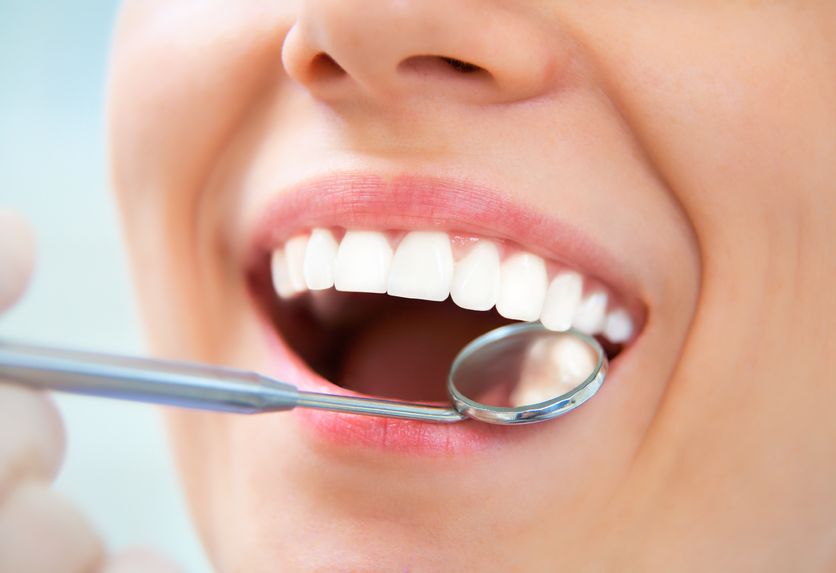
While it is well established that periodontitis is a major complication of diabetes, it is now known that periodontitis increases the risk of poor glycemic control in people with diabetes as compared to individuals with diabetes without periodontitis. Diabetes increases susceptibility to infection and also decreases the effectiveness of cells responsible for killing bacteria. Inflammation is enhanced in individuals with diabetes and certain proinflammatory molecules play a role in periodontal destruction. A specific proinflammatory molecule, TNF-alpha, plays a significant role in insulin resistance, which is the primary cause of type 2 diabetes. Elevated levels of TNF-alpha can lead to greater bone loss by killing cells responsible for repairing damaged soft tissue or bone and may exacerbate insulin resistance, thereby worsening glycemic control.[5] There is an increased risk of developing ketoacidosis, neuropathy, and retinopathy in individuals with diabetes and periodontitis. Severe periodontal disease increases the severity of diabetes and negatively impact metabolic control. Studies have show that periodontal diseases lead to a significant increase in glycated hemoglobin (HbA1c), a measure of blood glucose control, and high-sensitivity CRP, a measure of inflammation, which may be linked to poor glycemic control.[4] Periodontal treatment improves glycemic control through the reduction of the bacterial burden and inflammatory response.[5]
A relationship exists between oral infection and respiratory disease, particularly chronic obstructive pulmonary disease (COPD) and pneumonia. The oral biofilm is effectively a reservoir of infection for respiratory bacteria and therefore, good oral hygiene is critical. The bacteria present in the mouth can be released into saliva and then aspirated, or inhaled, into the lower airway, causing infection in this region. Additionally, inflammatory mediators that are produced by the periodontium may be involved in the development of respiratory disease via their proinflammatory effects in the lower airway.[5] Periodontal diseases have been shown to increase the risk of adverse pregnancy outcomes such as low birth weight and premature birth. Chronic infection can stimulate inflammation and can lead to elevated levels of inflammatory mediators. These mediators lead to premature rupture of membranes and preterm labor. Periodontal treatment leads to a reduction in serum levels of inflammatory mediators.[5] Periodontitis may be a factor in the initiation and progression of the autoimmune inflammatory response seen in rheumatoid arthritis (RA). People with RA are more likely to have antibodies to a specific bacterium known to cause periodontal disease than people without RA. It is therefore important to carefully screen patients with RA for periodontal disease.[4]
Naturopathic Approaches

The therapeutic goals in treating periodontal disease are to decrease wound healing time, improve membrane and collagen integrity, decrease inflammation and free-radical damage, and enhance immune status.
Green Tea
Epigallocatechin gallate (EGCG) is the major catechin found in green tea and can be used in the treatment of periodontitis. EGCG has an anti-inflammatory effect on human gingival fibroblasts, the cell that make connective tissues.[8] EGCG has been shown to destroy established P. gingivalis biofilms or plaques, due to its ability to generate hydrogen peroxide that destroys the bacterial cell wall, and also inhibits the formation of the biofilm. The amount of catechins present in a cup of green tea is enough to decrease P. gingivalis adherence.[9] A study comparing a 0.25% green-tea catechin mouthwash to 0.12% chlorohexadine gluconate mouthwash did not find a significant difference between plaque scores and were therefore found to be comparable in plaque reduction. Additionally, it was found that the catechin mouthwash decreased bad breath or halitosis associated with periodontal disease. Green-tea catechin may also prevent alveolar bone resorption that occurs in periodontal disease, thereby reducing the risk of tooth loss.[10] One study showed a significant decrease in both plaque and gingival index scores in individuals who used green-tea catechin locally.[11]
Vitamin C
Several studies have demonstrated that vitamin C enhances immune system function and influences infectious diseases.[12] Vitamin C deficiency may contribute to periodontitis severity and therefore, ensuring sufficient levels can be protective. Periodontal disease is associated with oxidative stress and the production of reactive oxygen species. Vitamin C has antioxidant action, and therefore can neutralize oxidative stress.[13] Vitamin C reduces the tissue damaging effects of P. gingivalis on human gingival fibroblasts. Fibroblasts require vitamin C in order to produce collagen. Vitamin C increases the number of collagen bundles in periodontal tissue and reduces gingival inflammation and oxidative stress.[12]
Vitamin D
Vitamin D insufficiency is highly prevalent and increases the risk of various diseases, including periodontitis. There is a dose-dependent significant inverse association between vitamin D status and the incidence of tooth loss and the presence of periodontitis. Vitamin D may influence tooth loss due to periodontitis via its immunomodulatory or antimicrobial effect, calcium absorption, and/or its effects on bone metabolism.[14] Vitamin D3 is crucial in the treatment and prevention of many common conditions, such as osteoporosis, which can also cause tooth loss.[15]
Bloodroot, Gotu Kola, and Pomegranate
Sanguinaria (bloodroot) has broad antimicrobial and anti-inflammatory activity. It has been shown to inhibit bacterial adherence, and therefore reduces plaque development.[16] Sanguinaria-containing toothpaste and oral rinse have been show to significantly inhibit the redevelopment of gingivitis following a chlorohexadine rinse period. It is important to not use a strong extract of sanguinaria, due to its tissue-destruction effects.[17]
Gotu kola and pomegranate promote tissue healing and modulate immune responses. Significant improvement of pocket depth, attachment level, and bleeding index were demonstrated in a study using this herbal combination, and therefore may be effective as an adjunctive treatment for periodontitis.[18]

Conclusion
Oral hygiene education in terms of instruction and how cavities, gingivitis, and periodontitis occur impacts dental health behaviour and strengthens the individual’s sense of responsibility for their oral health. Preventative education involves discussing brushing twice daily, flossing daily, and the use of a mouth rinse in order to reduce bacterial plaque and susceptibility to gingivitis.[5] It is important to empower patients so that they feel in control of their health outcomes. Regular checkups and cleaning are important in helping patients maintain a high standard of oral cleanliness. It is important, however, to not solely rely on professional treatments, since they play a secondary role in oral health. These checkups are critical in disease detection and in initiating early treatment, if necessary. Maintaining good oral hygiene through regular brushing, flossing, and proper diet is the most important factor in preventing the development of dental diseases.[19] In addition, naturopathic treatments further support the prevention of dental diseases. As shown in this article, poor oral health has broader implications for overall health, and therefore oral-health promotion is fundamental for disease prevention and is crucial in patients with cardiovascular disease.[6] It is important for all health-care providers to be aware of the relationship between oral inflammation and systemic diseases.[5]
 Niacin is one form of vitamin B3. Niacinamide and inositol hexanicotinate are the other two forms of B3 that exist; these forms are generally used to treat different conditions within the body. B vitamins ultimately help the body utilize fats and proteins; they also help convert food into fuel which is then used to produce energy.
Niacin is one form of vitamin B3. Niacinamide and inositol hexanicotinate are the other two forms of B3 that exist; these forms are generally used to treat different conditions within the body. B vitamins ultimately help the body utilize fats and proteins; they also help convert food into fuel which is then used to produce energy. Noticing blood while brushing or flossing can be alarming and shouldn’t be ignored! The importance of oral health is a concept introduced to most Canadians at a very young age, and with good reason. The Ontario Dental Hygienist’s Association reports that the link between oral infections and other diseases in the body is becoming well-documented and accepted within the health-care community. Periodontal disease is one of the most common human diseases
Noticing blood while brushing or flossing can be alarming and shouldn’t be ignored! The importance of oral health is a concept introduced to most Canadians at a very young age, and with good reason. The Ontario Dental Hygienist’s Association reports that the link between oral infections and other diseases in the body is becoming well-documented and accepted within the health-care community. Periodontal disease is one of the most common human diseases And so it begins. You find few strands of hair on your pillow and more than the usual amount on your hair brush. As you are cleaning your house, you begin to notice hair on the floor, in the shower, on your clothes, and then it dawns on you that you are not only leaving behind a trail of hair in every area of the house, but a hairless patch possibly somewhere on your scalp.
And so it begins. You find few strands of hair on your pillow and more than the usual amount on your hair brush. As you are cleaning your house, you begin to notice hair on the floor, in the shower, on your clothes, and then it dawns on you that you are not only leaving behind a trail of hair in every area of the house, but a hairless patch possibly somewhere on your scalp.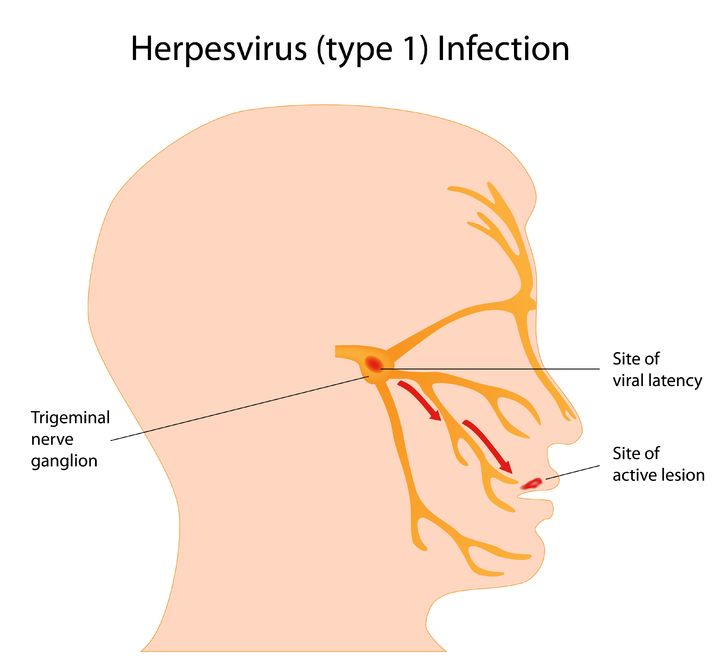 Herpes simplex virus (HSV) is a viral infection of the skin and mucous membranes. Lesions can occur in many different areas, especially in or around the mouth, lips, genitals, and eyes. There are two types of HSV that exist: HSV-1 and HSV-2. HSV-1 is responsible for the development of your typical “cold sore”; it therefore has a predisposition for the mouth and lips,
Herpes simplex virus (HSV) is a viral infection of the skin and mucous membranes. Lesions can occur in many different areas, especially in or around the mouth, lips, genitals, and eyes. There are two types of HSV that exist: HSV-1 and HSV-2. HSV-1 is responsible for the development of your typical “cold sore”; it therefore has a predisposition for the mouth and lips, Who we are and how we feel is often expressed through our hair. Regardless of if hair is curly, straight, twisted, corn-rowed or locked; it is a universal sign of beauty, sensuality, fertility and attractiveness. Moreover, hair helps us to communicate our state of health. It also serves the function of protecting our heads and skin, adding not only a layer of insulation, but also more dimension to our personalities.
Who we are and how we feel is often expressed through our hair. Regardless of if hair is curly, straight, twisted, corn-rowed or locked; it is a universal sign of beauty, sensuality, fertility and attractiveness. Moreover, hair helps us to communicate our state of health. It also serves the function of protecting our heads and skin, adding not only a layer of insulation, but also more dimension to our personalities.




